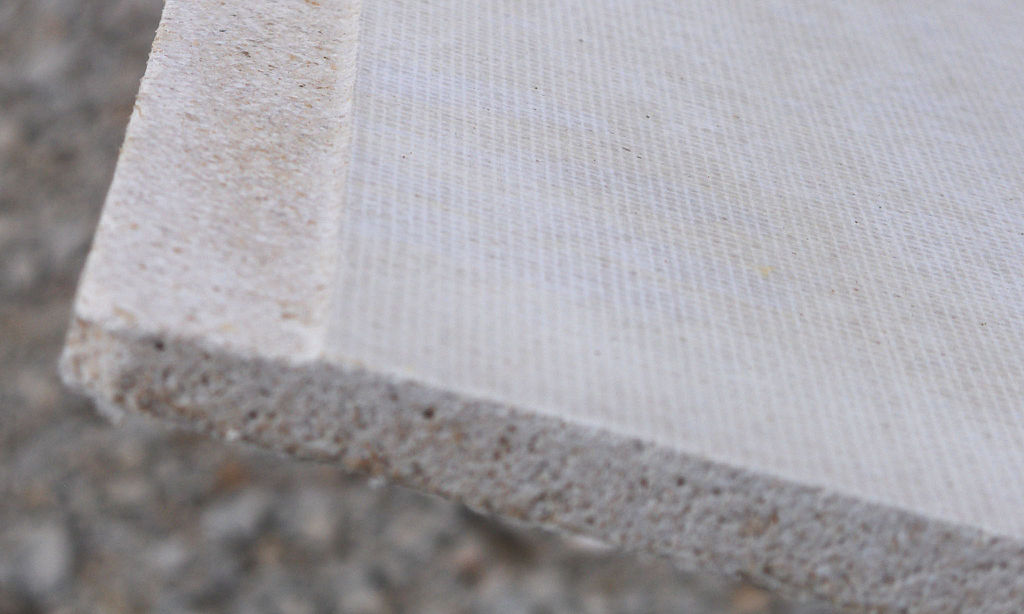The Gypsum Association released updates to both GA-221 Repair of Joint Ridging and GA-222 Repairing Screw or Nail Pops standards publications. Each set of recommendations clarifies best practices associated with common wallboard repairs.
Joint ridging, or beading, is a uniform, fine linear deformation that occurs at the joints of finished and decorated gypsum panel products. Compression at the edges or ends of the panels due to extreme fluctuations of temperature and humidity is the most common cause of ridging; however, misaligned framing can also contribute to the problem. The Gypsum Association recommends waiting until a new structure has experienced at least one complete heating/cooling cycle before making repairs.
Fastener popping occurs most commonly from lumber shrinkage due to initially high moisture content in newly constructed wood framing. Overly long fastener length contributes to the problem. While fastener popping that appears before or during finishing and decoration should be repaired immediately; popping that occurs a month or more into the heating season should wait for repair until the season’s end.
In the case of fastener popping, the secure reattachment of the gypsum panel product to the framing is essential. All new screws or nails should be of the proper length. Key to the repair methods outlined in both GA-221-14 and GA-222-14 is careful sanding and treatment with joint compound as well as observing recommended drying times prior to redecoration.
Related Stories
| Feb 9, 2012
Initiative to sell off under-used federal property gaining momentum
The bill is similar to a White House planto cut $8 billion worth of building costs by the end of the 2012 fiscal year, and to establish a panel to identify other sites worth selling or donating to nonprofits or state and local governments.
| Feb 9, 2012
Computer tool helps engineers design roof cladding using Canada's building code
Easier to design roof cladding that can withstand winds in a given area.
| Feb 9, 2012
Webinar focuses on lessons learned from LEED-certified industrial project
This case study will focus on strategies used to save the client money, achieve certification, and effectively market success once the project was complete.
| Feb 9, 2012
Rapid growth of zero energy buildings expected
Much of that growth will be in the European Union, where near-zero energy buildings are mandated by 2019 for public buildings, and by 2021 for all construction.
| Feb 9, 2012
Stiffer OSHA fines put strain on Kansas contractors
A fine for a violation that once cost between $750 and $1,200 now runs $7,000 or more per incident, according to a state industry association official.
| Feb 9, 2012
Webinar focuses on lessons learned from LEED-certified industrial project
A Construction Specifications Institute webinar will focus on the lessons learned through the design and construction of a LEED-certified industrial project, Better Living Mill Shop, the first industrial building in Central Virginia to earn LEED certification.
| Feb 8, 2012
California likely to eliminate redevelopment agencies
Leaders of California cities had been trying to fashion a compromise with lawmakers after the state Supreme Court ruled the state had the authority to eliminate the agencies and use their property tax money for local services.
| Feb 8, 2012
Project aimed at economical seismic retrofits on historic Memphis structures
The group will develop a low-cost seismic retrofit model that would benefit aging brick-and-mortar structures. It involves bolting steel brackets to existing wooden floor and ceiling joists.
| Feb 8, 2012
Houston signs on to Better Buildings Challenge
The challenge has about $4 billion in federal and private-sector funds, which it will use for building energy upgrades nationwide in the next two years.















